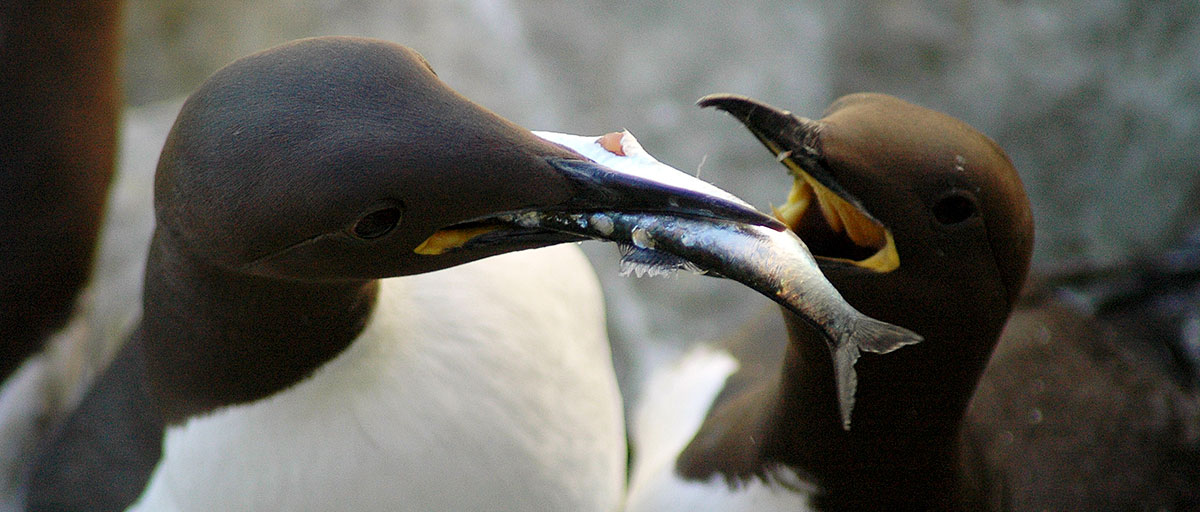A mechanistic framework to inform the spatial management of conflicting fisheries and top predators
Summary
- Conflicts of interest between resource extraction and conservation are widespread, and negotiating such conflicts, or trade‐offs, is a key issue for ecosystem managers. One such trade‐off is resource competition between fisheries and marine top predators. Managing this trade‐off has so far been difficult due to a lack of knowledge regarding the amount and distribution of prey required by top predators.
- Here, we develop a framework that can be used to address this gap: a bio‐energetic model linking top predator breeding biology and foraging ecology with forage fish ecology and fisheries management.
- We apply the framework to a Baltic Sea colony of common guillemots Uria aalge and razorbills Alca torda, two seabird species sensitive to local prey depletion, and show that densities of forage fish (sprat Sprattus sprattus and herring Clupea harengus) corresponding to the current fisheries management target BMSY are sufficient for successful breeding. A previously proposed fisheries management target for conserving seabirds, 1/3 of historical maximum prey biomass (B1/3), was also sufficient.
- However, the results highlight the importance of maintaining sufficient prey densities in the vicinity of the colony, suggesting that fine‐scale spatial fisheries management is necessary to maintain high seabird breeding success.
- Despite foraging on the same prey, razorbills could breed successfully at lower prey densities than guillemots but needed higher densities for self‐maintenance, emphasizing the importance of considering species‐specific traits when determining sustainable forage fish densities for top predators.
- Synthesis and applications. Our bio‐energetic modelling framework provides spatially explicit top predator conservation targets that can be readily integrated with current fisheries management. The framework can be combined with existing management approaches such as dynamic ocean management, marine spatial planning and management strategy evaluation to inform ecosystem‐based management of marine resources.







